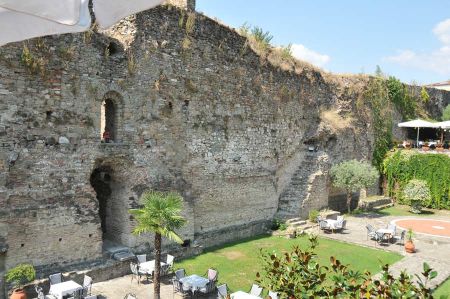The ancient Roman Elbasan - once Scampa at Via Egnatia
- Written by Portal Editor
The first historically known settlers in the area of Elbasan belonged to the ethnic group of the Illyrians, which in the 2nd century erected first dwellings at the river Shkumbin, at that time called Genusus.
Later there was a Roman trading post, called Mansio Scampa. Scampa was the Illyrian word for "rock". In 2010, another two Illyrian tombs were found near the city walls, being excavated and studied. After the end of the Third Macedonian (Illyrian) - Roman War in 168 BC, Illyrian got under Roman administration and later became a Roman protectorate.
The Via Egnatia began at the port cities of Dyrrhachium and Apollonia
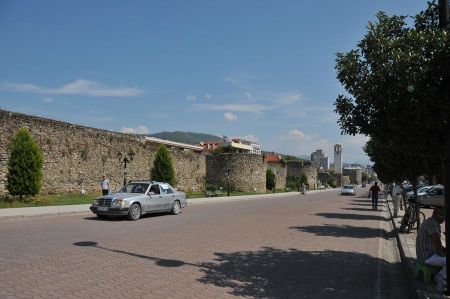 In 146 BC, the Romans finished works on the trade route Via Egnatia, which served as a sequel to the Italian Via Appia on the Balkans and represented a direct connection between Rome and Byzantium in the form of a mostly paved road. The Via Egnatia began with the two port cities Dyrrhachium and Apollonia at the Adriatic and united west of Elbasan at the riverfront of Genusus. From here the road followed the Shkumbin Valley to the Ohrid lake, passed the city Ohrid, then called Lynkestis, passed through Bitola and Edessa to Thessalonica and continued to Kavala and Alexandroupolis and then to Istanbul. For friends of several days hiking tours we would love to mention the first part of a hikers route explanation along Via Egnatia, just published by the Via Egnatia Foundation: "Via Egnatia on foot" from Marietta van Attekum and Holger de Bruin.
In 146 BC, the Romans finished works on the trade route Via Egnatia, which served as a sequel to the Italian Via Appia on the Balkans and represented a direct connection between Rome and Byzantium in the form of a mostly paved road. The Via Egnatia began with the two port cities Dyrrhachium and Apollonia at the Adriatic and united west of Elbasan at the riverfront of Genusus. From here the road followed the Shkumbin Valley to the Ohrid lake, passed the city Ohrid, then called Lynkestis, passed through Bitola and Edessa to Thessalonica and continued to Kavala and Alexandroupolis and then to Istanbul. For friends of several days hiking tours we would love to mention the first part of a hikers route explanation along Via Egnatia, just published by the Via Egnatia Foundation: "Via Egnatia on foot" from Marietta van Attekum and Holger de Bruin.
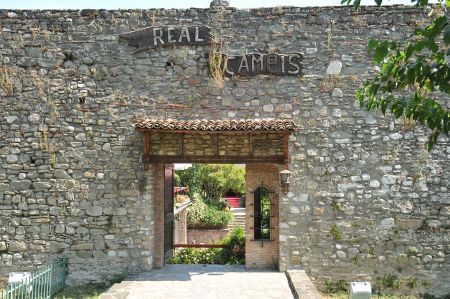 Later rest areas were periodically applied alongVia Egnatia, in Latin called Mutatio ad Quintum - stations for changing the animals every fifth mile. The station at the present village Bradashesh, about seven kilometers (five miles) west of Elbasan has been preserved next to today's road to Durres. Hidden at the foothills of the mountains, you will find the remains of a small sophisticated bathing facilities with reservoir of spring water from the middle of the 2nd century about 160 AD. In a Roman grave inscription, Scampa was mentioned as a settlement again: "This is a place of rich farmland, with riverside location at Genusus at a crossroad on the Via Egnatia.
Later rest areas were periodically applied alongVia Egnatia, in Latin called Mutatio ad Quintum - stations for changing the animals every fifth mile. The station at the present village Bradashesh, about seven kilometers (five miles) west of Elbasan has been preserved next to today's road to Durres. Hidden at the foothills of the mountains, you will find the remains of a small sophisticated bathing facilities with reservoir of spring water from the middle of the 2nd century about 160 AD. In a Roman grave inscription, Scampa was mentioned as a settlement again: "This is a place of rich farmland, with riverside location at Genusus at a crossroad on the Via Egnatia.
Scampa seat of a bishop
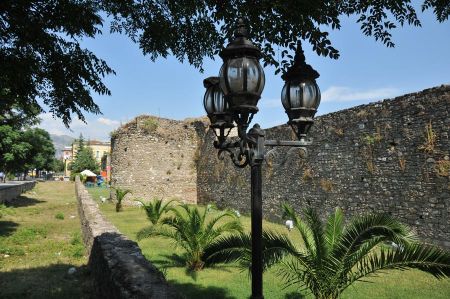 Scampa was expanded as a fortress (Castrum) by the Romans beginning of the 4th century, the position of the wall rectangle of 348 meters to 308 meters even today forms the border of the old town. The Via Egnatia went through the center passing the city gates of the west and east. Another gate was established at the river in the south. The former city walls with eleven meters of height were reinforced by 26 regularly arranged and out of the wall protruding towers. From the city walls, only the southern part could be kept completely with the former towers, other parts are mostly gone.
Scampa was expanded as a fortress (Castrum) by the Romans beginning of the 4th century, the position of the wall rectangle of 348 meters to 308 meters even today forms the border of the old town. The Via Egnatia went through the center passing the city gates of the west and east. Another gate was established at the river in the south. The former city walls with eleven meters of height were reinforced by 26 regularly arranged and out of the wall protruding towers. From the city walls, only the southern part could be kept completely with the former towers, other parts are mostly gone.
In the 5th century Scampa was seat of a bishop. There is the report of a delegation of Pope Hormisdas, who was welcomed in the Byzantine province Scampa in 519. The location of the former Episcopal church is unknown, excavations of today's higher ground level in the old town have yielded finds of other Christian buildings. Outside these walls, the remains of a basilica were uncovered on a hill in the west (Tepe) whose phases are set with the 4th to 6th century. Also outside the city walls next to the southern gate, the mosaic floor of another basilica was discovered in 2007, probably it dates back to the 6th century.
 From the 7th century, there have been repeatedly invasions by Slavs, severe damages were caused by fires in Scampa. The place was then probably left. It is not clear whether another settlement under the Byzantines had existed.
From the 7th century, there have been repeatedly invasions by Slavs, severe damages were caused by fires in Scampa. The place was then probably left. It is not clear whether another settlement under the Byzantines had existed.
If any of our dear readers is not that much interested in Roman History, there is still lot more to see in Elbasan, if it is the historical background of the Ottoman period or the huge selection of different restaurant, bars and cafes offering delicious products of Albanian Cuisine.
Ancient Roman Elbasan – Discover Scampa on the Via Egnatia - more details
Introduction – Elbasan: Where History Becomes Tangible
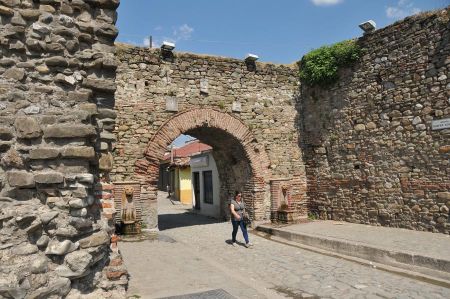 When you walk through the streets of Elbasan, you immediately sense it – every stone here breathes history. This city, located in the heart of Albania, was once a Roman settlement called Scampa, directly on the legendary Via Egnatia. Today, Elbasan is a fascinating place where ancient and modern merge in a unique way.
When you walk through the streets of Elbasan, you immediately sense it – every stone here breathes history. This city, located in the heart of Albania, was once a Roman settlement called Scampa, directly on the legendary Via Egnatia. Today, Elbasan is a fascinating place where ancient and modern merge in a unique way.
Why Elbasan is an insider tip for history buffs
Away from the classic tourist destinations, Elbasan offers an authentic insight into the eventful history of the Balkans – from Roman times through the Byzantines to Ottoman rule.
The importance of the Via Egnatia for the region
This ancient trade route once connected the Adriatic coast with the Bosporus – and made Elbasan an important hub for military, trade, and culture.
The location of Elbasan
Where is Elbasan in Albania?
Elbasan is located in central Albania, about 50 kilometres southeast of Tirana. Nestled in a picturesque hilly landscape, the city is an ideal starting point for exploration.
Strategic Importance of the Via Egnatia
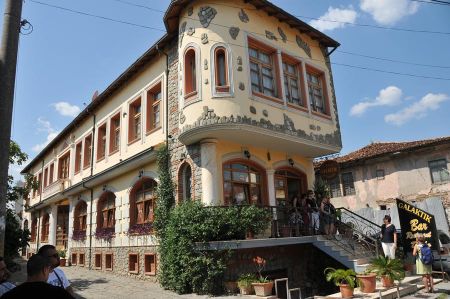 Even in ancient times, Elbasan was militarily and economically important due to its location along the Via Egnatia – a centre for travellers, traders, and legionaries.
Even in ancient times, Elbasan was militarily and economically important due to its location along the Via Egnatia – a centre for travellers, traders, and legionaries.
Scampa – The Roman Roots of Elbasan
Foundation and Development
Scampa was founded in the 2nd century AD as a Roman military camp and quickly developed into an important settlement with city walls, thermal baths, and a forum.
Function as a Military Camp and Trade Centre
The city was not only a military outpost, but also a trade centre – cultures and languages intersected here.
The Via Egnatia – Lifeline of the Roman Balkans
Historical Significance of the Road
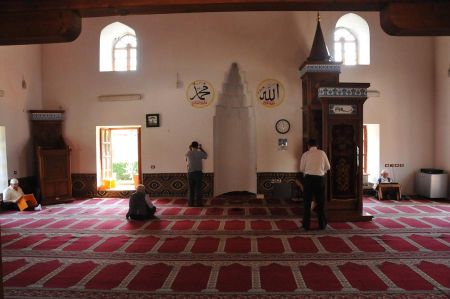 This road was the backbone of Roman traffic in the east. It connected important cities and ensured rapid troop transport and brisk trade.
This road was the backbone of Roman traffic in the east. It connected important cities and ensured rapid troop transport and brisk trade.
From Durrës to Byzantium (Istanbul)
The Via Egnatia led from Durrës on the Adriatic to Byzantium – a masterpiece of ancient engineering that also ran through Elbasan.
The ancient ruins of Scampa
City walls and towers
A large part of the Roman city walls has survived to this day. Their massive walls and towers bear witness to a turbulent history.
Roman thermal baths, basilica, and mosaics
Excavations have unearthed spectacular finds – including mosaics, parts of a basilica, and the remains of public baths.
Archaeological finds and their interpretation
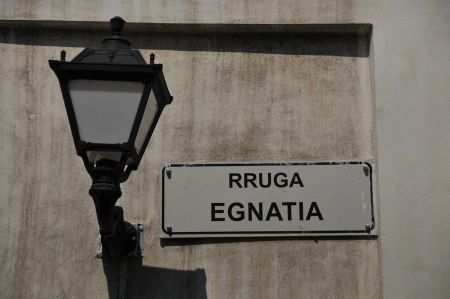 Each find provides insight into life in ancient Scampa – from everyday objects to showpieces.
Each find provides insight into life in ancient Scampa – from everyday objects to showpieces.
The fortress of Elbasan
A fusion of antiquity and the Middle Ages
The fortress, which still dominates the cityscape today, was later built on the foundations of Scampa.
Traces of the Ottoman Period
Within the walls, you'll find Ottoman houses, small mosques, and cobblestone streets – a living open-air museum.
Elbasan Today – Between Tradition and Modernity
Life Within the Ancient Walls
In the old town, people live as they always have – with gardens, workshops, and coffee houses nestled within centuries-old walls.
Culture, Crafts, and Cuisine
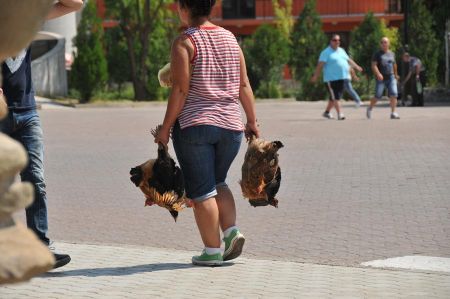 Elbasan is famous for its craftsmanship, music, and traditional foods – a city full of soul.
Elbasan is famous for its craftsmanship, music, and traditional foods – a city full of soul.
Museums and Archaeological Sites
The Elbasan Historical Museum
Here you can learn all about the city's history – from ancient times to modern times, with many original finds.
Exhibitions on Scampa and the Via Egnatia
The sections on the Roman period are particularly fascinating, offering maps, artifacts, and interactive elements.
Religious Diversity in Historic Elbasan
Churches, Mosques, and Tolerance
Elbasan stands for religious coexistence – Orthodox churches, Catholic chapels, and mosques coexist peacefully side by side.
The City's Intercultural Heritage
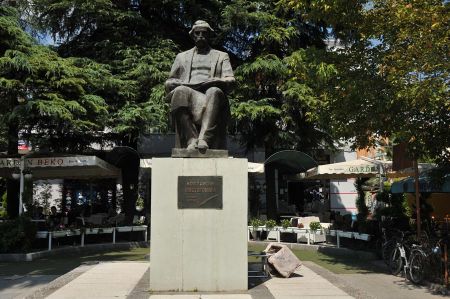 The many eras have created a colourful, open cityscape – a symbol of the peaceful dialogue between cultures.
The many eras have created a colourful, open cityscape – a symbol of the peaceful dialogue between cultures.
Activities for History Buffs
Walks on the Via Egnatia
Part of the ancient road is still accessible today – a special experience for anyone who wants to experience history firsthand.
Guided Tours of the Ruins of Scampa
Local guides offer exciting tours of the archaeological sites – vividly narrated and historically sound.
Culinary Discoveries in Elbasan
Local Specialties
Be sure to try "Tavë Elbasani," a traditional lamb dish with yogurt – hearty and delicious!
Influence of Roman-Ottoman Cuisine
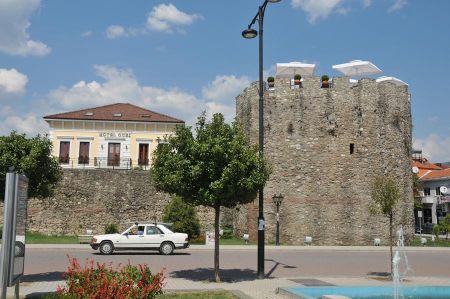 Elbasan's cuisine combines Mediterranean lightness with oriental spices – a culinary reflection of history.
Elbasan's cuisine combines Mediterranean lightness with oriental spices – a culinary reflection of history.
Tips for Your Trip to Elbasan
Best Time to Visit
April to June and September to October are ideal – pleasant weather and fewer tourists.
Accommodation and Arrival
There are charming guesthouses within the fortress walls as well as modern hotels. Elbasan is easily accessible by bus or car.
Elbasan as the Cultural Centre of Albania
Festivals, Music, and Dance
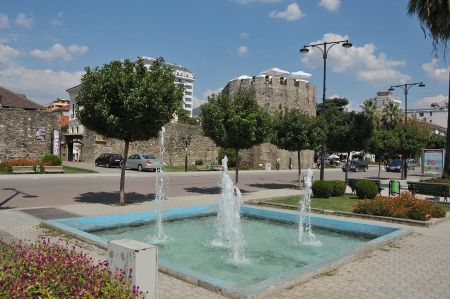 From traditional folk festivals to modern music events, Elbasan celebrates culture on many levels.
From traditional folk festivals to modern music events, Elbasan celebrates culture on many levels.
Crafts and Traditions
Handmade textiles, pottery, and silver jewellery are particularly popular – each piece tells a story.
Conclusion – Why Elbasan is a Must-See for Cultural Travelers
Elbasan is like an open history book – exciting, surprising, and profound, page after page. Those who want to discover Albania away from the crowds will find an authentic place with soul, charm, and genuine cultural richness here. Scampa and the Via Egnatia in particular make this city a highlight for history buffs.
❓ FAQs about Roman Elbasan and Scampa
1. Can the ruins of Scampa be visited freely?
Yes, most of them are freely accessible. Guided tours are also offered.
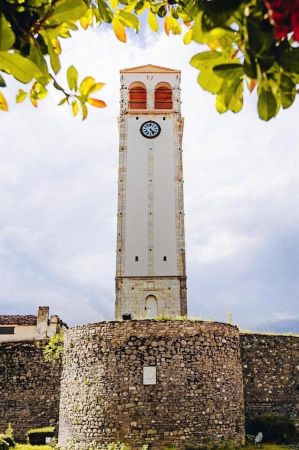 2. Are there German-speaking tour guides in Elbasan?
2. Are there German-speaking tour guides in Elbasan?
Some agencies offer tours in German – book online in advance or inquire on site.
3. Is the Via Egnatia still accessible?
Parts of it, especially around Elbasan, are still well preserved and open to the public.
4. How much time should you plan for Elbasan?
At least one day, but two days are ideal for a thorough exploration.
5. Is Elbasan suitable for families with children?
Yes! The city is quiet, safe, and offers exciting history, even for young explorers.
Please read as well:
Skadar Lake - geologically considered a very young
Meeting in Lin - at Ohrid Lake
-
 Elbasan - once called Scampa
Elbasan - once called Scampa
Elbasan - once called Scampa
Elbasan - once called Scampa
-
 Elbasan - once called Scampa
Elbasan - once called Scampa
Elbasan - once called Scampa
Elbasan - once called Scampa
-
 Elbasan - once called Scampa
Elbasan - once called Scampa
Elbasan - once called Scampa
Elbasan - once called Scampa
-
 Elbasan - once called Scampa
Elbasan - once called Scampa
Elbasan - once called Scampa
Elbasan - once called Scampa
-
 Elbasan - once called Scampa
Elbasan - once called Scampa
Elbasan - once called Scampa
Elbasan - once called Scampa
-
 Elbasan - once called Scampa
Elbasan - once called Scampa
Elbasan - once called Scampa
Elbasan - once called Scampa
-
 Elbasan - once called Scampa
Elbasan - once called Scampa
Elbasan - once called Scampa
Elbasan - once called Scampa
-
 Elbasan - once called Scampa
Elbasan - once called Scampa
Elbasan - once called Scampa
Elbasan - once called Scampa
-
 Elbasan - once called Scampa
Elbasan - once called Scampa
Elbasan - once called Scampa
Elbasan - once called Scampa
-
 Elbasan - once called Scampa
Elbasan - once called Scampa
Elbasan - once called Scampa
Elbasan - once called Scampa
-
 Elbasan - once called Scampa
Elbasan - once called Scampa
Elbasan - once called Scampa
Elbasan - once called Scampa
-
 Elbasan - once called Scampa
Elbasan - once called Scampa
Elbasan - once called Scampa
Elbasan - once called Scampa
-
 Elbasan - once called Scampa
Elbasan - once called Scampa
Elbasan - once called Scampa
Elbasan - once called Scampa
-
 Elbasan - once called Scampa
Elbasan - once called Scampa
Elbasan - once called Scampa
Elbasan - once called Scampa
-
 Elbasan - once called Scampa
Elbasan - once called Scampa
Elbasan - once called Scampa
Elbasan - once called Scampa
-
 Elbasan - once called Scampa
Elbasan - once called Scampa
Elbasan - once called Scampa
Elbasan - once called Scampa
-
 Elbasan - once called Scampa
Elbasan - once called Scampa
Elbasan - once called Scampa
Elbasan - once called Scampa
-
 Elbasan - once called Scampa
Elbasan - once called Scampa
Elbasan - once called Scampa
Elbasan - once called Scampa
-
 Elbasan - once called Scampa
Elbasan - once called Scampa
Elbasan - once called Scampa
Elbasan - once called Scampa
-
 Elbasan - once called Scampa
Elbasan - once called Scampa
Elbasan - once called Scampa
Elbasan - once called Scampa
-
 Elbasan - once called Scampa
Elbasan - once called Scampa
Elbasan - once called Scampa
Elbasan - once called Scampa
-
 Elbasan - once called Scampa
Elbasan - once called Scampa
Elbasan - once called Scampa
Elbasan - once called Scampa
-
 Elbasan - once called Scampa
Elbasan - once called Scampa
Elbasan - once called Scampa
Elbasan - once called Scampa
-
 Elbasan - once called Scampa
Elbasan - once called Scampa
Elbasan - once called Scampa
Elbasan - once called Scampa
-
 Elbasan - once called Scampa
Elbasan - once called Scampa
Elbasan - once called Scampa
Elbasan - once called Scampa
-
 Elbasan - once called Scampa
Elbasan - once called Scampa
Elbasan - once called Scampa
Elbasan - once called Scampa
-
 Elbasan - once called Scampa
Elbasan - once called Scampa
Elbasan - once called Scampa
Elbasan - once called Scampa
-
 Elbasan - once called Scampa
Elbasan - once called Scampa
Elbasan - once called Scampa
Elbasan - once called Scampa
-
 Elbasan - once called Scampa
Elbasan - once called Scampa
Elbasan - once called Scampa
Elbasan - once called Scampa
-
 Elbasan - once called Scampa
Elbasan - once called Scampa
Elbasan - once called Scampa
Elbasan - once called Scampa
-
 Elbasan - once called Scampa
Elbasan - once called Scampa
Elbasan - once called Scampa
Elbasan - once called Scampa
-
 Elbasan - once called Scampa
Elbasan - once called Scampa
Elbasan - once called Scampa
Elbasan - once called Scampa
-
 Elbasan - once called Scampa
Elbasan - once called Scampa
Elbasan - once called Scampa
Elbasan - once called Scampa
https://www.alaturka.info/en/albania/elbasan/3432-the-ancient-roman-elbasan-once-scampa-at-via-egnatia?layout=default%2Famp%2Famp%2Famp%2Famp%2Famp%2Famp%2Famp%2Famp%2Famp%2Famp%2Famp%2Famp%2Famp%2Famp#sigProId14ff8dd618
